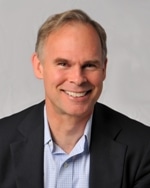
The year was 1945 and the U.S. Government had a major dilemma on its hands. Nazi Germany had been totally defeated but the world was lurching headlong into a new conflict pitting the U.S. against its former World War II ally, the Soviet Union.
The new conflict would be known as the Cold War and its first flashpoint would be in conquered Germany itself, where the Allies had agreed to divide the country into zones of occupation. The precise boundaries of these occupation zones had not yet been drawn. The Soviets raced in from the East to grab as much of Germany as they could and the U.S., Britain and France raced in from the West to grab as much of the country as they could.
But it wasn’t just German territory that each side was seeking; both sides wanted to capture as much German talent as they possibly could as well.
This war for talent was at a fever pitch when it came to Germany’s rocket scientists. Nazi Germany had developed some, for the time, particularly sophisticated rocket technology. Building on concepts developed by other scientists, like the American physicist Robert Goddard, the Germans had built and deployed what amounted to rocket-propelled bombs.
During the Second World War these rockets were known as the V-1 and V-2. The Germans were able to hit London with them and inflict a degree of terror on the British population. Both the Soviets and the Americans sensed that these rockets were not only the basis for future weapons systems, but they believed these rockets also held the keys to man’s efforts to unlock the mysteries of space.
Since neither the USSR nor the U.S. had developed rocket technologies to this extent, both nations wanted to capitalize on German operational experiences as they developed their rocket and missile programs.
Both British and Soviet intelligence knew that Germany was in the process of developing rockets as weapons. They also knew that most of the work for Germany’s rocket program was being done at Peenemuende, on the Baltic coast. Britain’s Royal Air Force launched Operation Hydra, dropping over 1800 tons of explosives on the Nazi facility. The raid delayed the rocket program for a few months, but didn’t stop it.
American intelligence was also developing information on Germany’s rocket program. With the help of interrogations conducted at a special Prisoner of War camp known as “PO Box 1142” and other sources, the Americans began to draw up what they called their “Black List” of important German rocket scientists and engineers. The top name on that list was Wernher von Braun.
Von Braun was Germany’s preeminent rocket scientist. He had developed an interest in rockets and space travel at an early age. The German military had sponsored his doctoral research in the early 1930s and he quickly found employment helping the Third Reich develop weapons such as the V-1 and V-2 rockets. He also was a member of both the Nazi Party and the SS, the party’s notorious paramilitary arm.
But in 1945 those facts didn’t matter as much as von Braun’s knowledge of rockets. He and his team of scientists surrendered to the U.S. Army’s 44th Infantry Division in Austria on May 2. They were moved out of the area two days before it was turned over to Soviet control. After being interrogated at various locations throughout Germany, von Braun and his team were brought to the U.S. 66 years ago this week.
Von Braun was interrogated separately at “PO Box 1142” for a time, but then re-united with his fellow scientists to embark on their American careers, which led to von Braun playing a key part in leading NASA to accomplish the first manned flight to the moon.
Intelligence had helped defeat Nazi Germany. It also made Wernher von Braun’s new life possible. Enhanced by a very sophisticated interrogation process that turned former enemies into assets, the U.S. was able to enter the missile and space races armed with unique intelligence insights. These insights were gleaned, in part, at “PO Box 1142”, the code name for a place you may know as Fort Hunt, just down the George Washington Parkway from Mount Vernon, making this area a front line in the intelligence wars 66 years ago.
Cedric Leighton lives in Lorton and is the Founder and President of Cedric Leighton Associates, a Washington area strategic risk and management consultancy.


